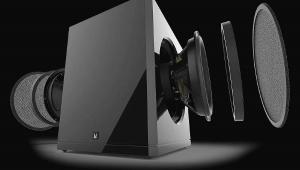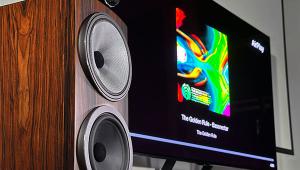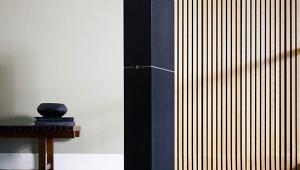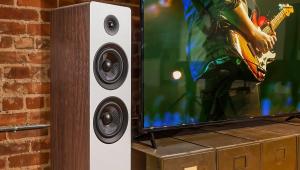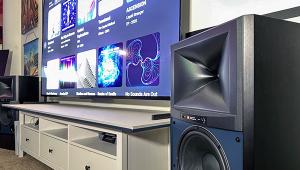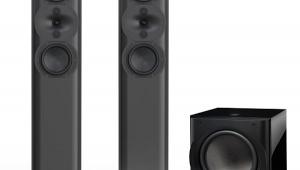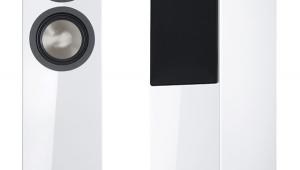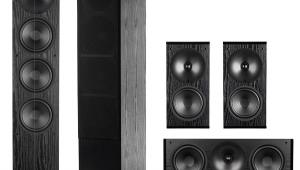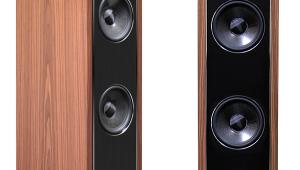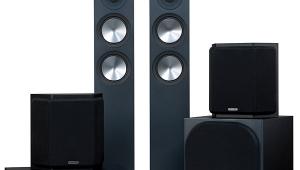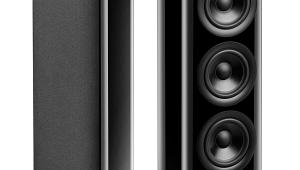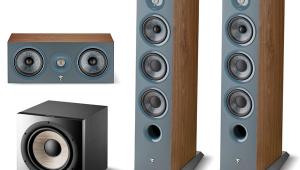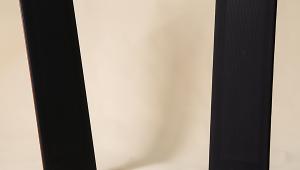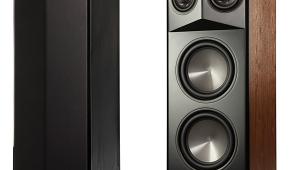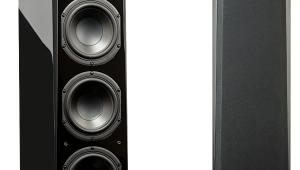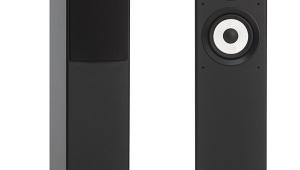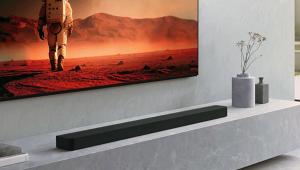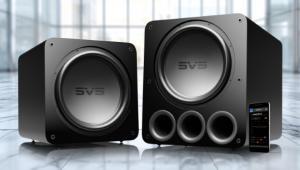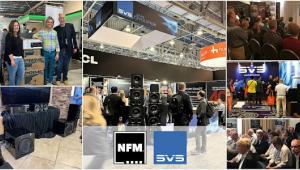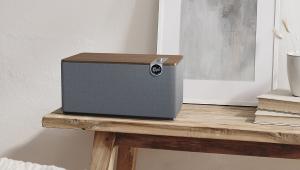Focal Profile 918 Speaker System Measurements
Most of the measurements shown here for the Profile 918 and Profile CC908 were made with the grilles removed. It's usually an article of audiophile faith that grilles degrade the sound (more often than not they do). But here the grilles do not cover the tweeter. Instead, they fit flush against the tweeter's small, triangular-shaped baffle, likely minimizing diffraction effects. FM listened to the Focals with the grilles on. And both speakers did measure better with the grilles in place; on axis measurements in that configuration are also included.
The impedance of the Profile 918 dropped to a minimum of 3.3Ω at 97Hz. The ported cabinet is tuned to 36Hz. I would rate the speaker's nominal impedance, conservatively, at 5Ω. It does remain below 4Ω from 80Hz-356Hz, however, a power-demanding region on must music. But the impedance phase angle remains relatively benign across the audible frequency range. The speaker should not be overly fussy about the amp used with it, but the amp should be able to drive 4Ω without difficulty. The Profile 918's sensitivity measured approximately 88dB/2.83V/meter.
The horizontal front response of the 918 is shown in Fig.1 (violet). This is the pseudo-anechoic response averaged over a 30° forward horizontal angle, taken at tweeter height, combined with the nearfield responses of the woofers and port.

Fig.1: Focal Profile 918, pseudo-anechoic response off the horizontal axis at 45° (red) and 60° (blue). Grille off.
The 918's averaged front horizontal response is very smooth up to just above 1.5kHz. There's a significant suckout centered at around 2.6kHz. This is the mid-tweeter crossover point. The frequencies in the low treble are slightly elevated. The off-axis performance follows a similar track below about 5kHz, then rolls off quite rapidly (with an odd peak in the rolloff at 45-degrees).
The bass response holds up well down to an effective lower limit of 31Hz (-10dB relative to its output at 80Hz).
Fig.2 shows the on-axis response with the grille in place. Note that while a small depression remains in the mid-tweeter crossover region, it's far less severe than with the grill removed. The responses in both the presence region and low treble are now much smoother. But a small peak does develop around 10kHz with the grille on. This could add a bit of sparkle and also slightly emphasize high frequency noise such as tape hiss (FM commented on this).

Fig.2: Focal Profile 918 pseudo-anechoic response directly on the tweeter axis combined with nearfield responses of the woofers and port. Grille on.
Fig.3 shows the same averaged horizontal front response as in Fig.1 (violet, without grille), this time overlaid with the vertical responses taken at +15° (red) and –15° (blue). These curves suggest that your vertical ear position on the 918 relative to the tweeter should be at or slightly above the tweeter axis. Sit much lower and a severe dip can develop just under 3kHz.

Fig.3: Focal Profile 918, pseudo-anechoic response at 15° above (red) and 15° below (blue) the tweeter axis. Grille off.
The Profile CC908's impedance dropped to a minimum value of 4.36 Ω at 980Hz. Its ported cabinet is tuned to 55Hz. I would rate the speaker's nominal impedance, very conservatively, at 6Ω, with a benign phase angle. Its sensitivity measured approximately 91dB/2.83V/m. The CC908 should be a very easy load to drive.
The measured front horizontal response of the CC908, taken on the tweeter axis and averaged in the same manner as described above for the Profile 918, is shown in Fig.4 (violet curve). The effective bass extension is approximately 43Hz (-10dB relative to the output at 80Hz)). The on-axis response is actually a bit smoother than the 918 (no presence-region dip) though there is a small peak in the response at 7kHz. The off-axis response of this three-way design does not exhibit the severe suckouts we see in two-way center channel speakers with their typical woofer-tweeter-woofer horizontal layout. But it is more uneven than we've seen in the best 3-way centers.

Fig.4: Focal Profile CC908, pseudo-anechoic response off the horizontal axis at 45° (red) and 60° (blue). Grille off.
Fig.5 shows the smoother direct front axis response at tweeter height with the grille in place.

Fig.5: Focal Profile CC908 pseudo-anechoic response directly on the tweeter axis combined with nearfield responses of the woofers and ports. Grille on.
Fig.6 shows the vertical response of the CC908 at + 15° (red) and –15° (blue), overlaid again with the averaged front horizontal response sans grille. The response at +15° is slightly better in that a sharp dip at 3kHz is likely to be less audible than the broader (though less deep one at -15°.

Fig.6: Focal Profile CC908, pseudo-anechoic response at 15° above (red) and 15° below (blue) the tweeter axis. Grille off.
Overall, this is a respectable though not spectacular set of measurements. But there was nothing here to dampen FM's enthusiastic response to the sound of the Profile 918 system. Just be sure and use it with the grilles on. Thomas J. Norton
Figs. 1,3,4, and 6 (violet curve): pseudo-anechoic response on the tweeter axis, averaged across a 30° horizontal window, combined with nearfield responses of the woofer(s) and port(s).
Apart from the bass from the woofers and ports (measured close-in) all measurements taken at 1 meter.
